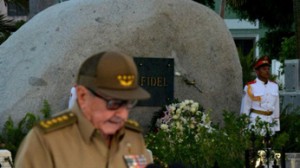The launching ceremony of the world’s largest nuclear icebreaker- Arktika took place at the Baltic Shipyard in St.-Petersburg of Russia on June 16, 2016.The ceremony was attended by Chairperson of the Council of Federation of the Federal Assembly of the Russia Valentina Matvienko; Plenipotentiary Representative of the President of Russia in North-West District Vladimir Bulavin; Governor of Murmansk Region Marina Kovtun; CEO of ROSATOM Sergey Kirienko; General Director of FSUE Atomflot Vyacheslav Ruksha and others.
Valentina Matvienko in her welcome speech said. “World’s largest and most powerful nuclear icebreaker Arktika has left the slipway. I am sure the icebreaker will give new impetus to the development of the Arctic region”.
“The Arktika’s launch is a victory in all senses,” Rosatom chief Sergey Kiriyenko said. “Today we can say that by the end of 2017 this icebreaker will join Rosatomflot. This will open up fundamentally new opportunities in front of our country in terms of maintaining the national defence and year-round navigation in the Arctic and ensuring economic development in a region that is of crucial importance for Russia and the rest of the world.”
The vessel is 189.5 yards long and 37.1 yards wide and is fitted with two designed RITM-200 nuclear-power reactors. The maximum thickness of solid ice the icebreaker can overcome is 2.9 meters. The universal nuclear icebreaker will support all-year-round navigation along the entire Northern Sea Route, delivery of hydrocarbons to the Pacific Asia markets.
Keel of the Icebreaker was laid on November 5, 2013 The icebreaker is designed for independent steering of ships (including large tonnage ones) and leading caravans in the West Arctic all-year-round. The double-draft design of the ship makes possible to use her both in the Arctic and in estuaries of the Polar rivers (in particular, in shallow water of the Yenissei River (Dudinka) and the Gulf of Ob. The icebreaker can be also used for towing ships and other vessels in the ice and open water, rendering assistance to ships, and carrying out rescue operations in the ice and open water. Moreover the ship will have two nuclear powered water distillation units on board.




